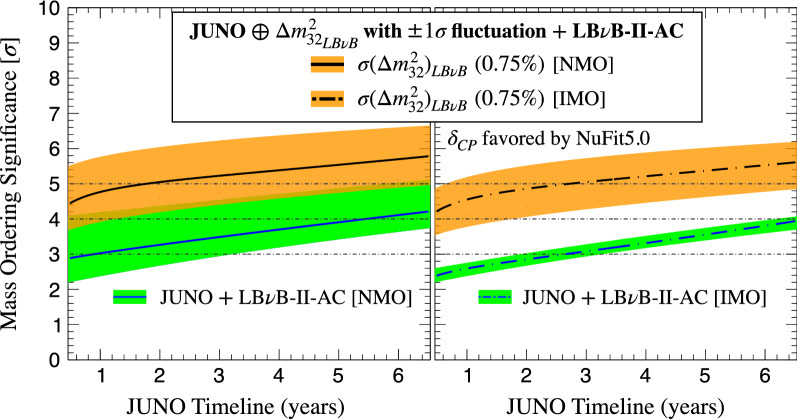Figure 7.
Mass ordering sensitivity and possible resolution timeline. Since all the NOvA and T2K data are expected to be accumulated by 202457 and 202652, the combined sensitivity follows JUNO data availability. JUNO is expected to start in 2023, reaching its statistically dominated nominal MO sensitivity (9 units of ) within 6 years. We illustrate the NMO (plot on the left) and IMO (plot on the right) scenarios. The sensitivity evolution depends mainly on JUNO once boosted, where 0.75% uncertainty (black line) is considered. The effect of fluctuations is indicated (orange bands), including that of the variance due to the data favoured region for (green band). The larger band of the NMO is caused by contribution of the LBB-II experiments, whose contribution is rather negligible for opposite IMO. Since JUNO boosted dominates, the sensitivities are almost independent of NMO and IMO solutions (left), this also demonstrating the humble overall impact of the AC channel (NOvA mainly) of the LBB-II experiments upon combination. The mean significance is expected to reach the level, including fluctuations and degeneracies (i.e., 84% probability) for both MO solutions, where the precision on is the leading order term. In fact, a 5 measurement may be possible, at 50% probability, within 3 years of JUNO data taking start once combined. In the end, JUNO data may prescind entirely from the LBB’s AC information (minor impact), thus enabling a fully resolved pure vacuum oscillation MO measurement.

